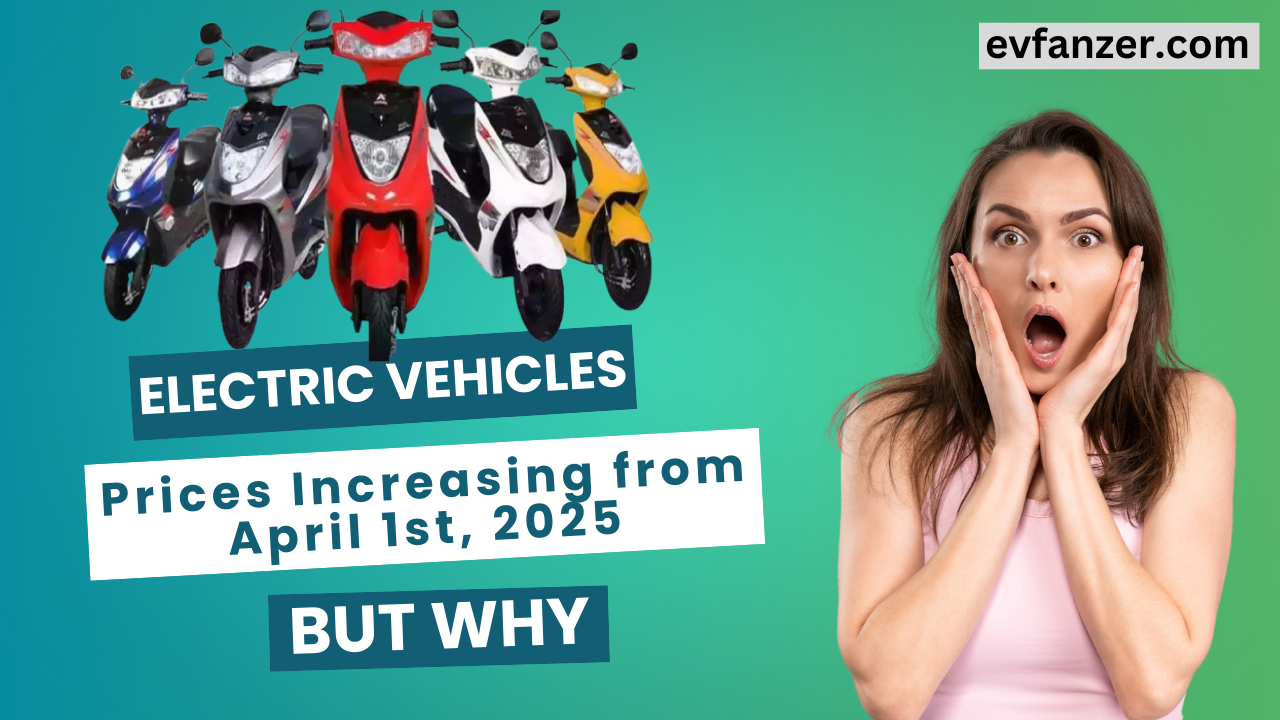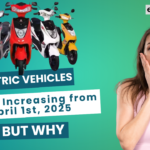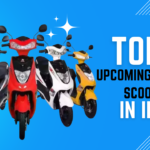Electric Vehicle Subsidy Update: What You Need to Know
Electric vehicles (EVs) in India have gained immense popularity, thanks to government subsidies that made them more affordable. However, a significant change is coming from April 1st, as subsidies for electric two-wheelers and three-wheelers will be reduced by half under the PM e-Drive scheme. If you are planning to buy an EV, it’s crucial to understand these changes and how they will impact pricing.
Electric Vehicles Prices Increasing from April 1st
Union Minister Nitin Gadkari’s Statement on EV Subsidies
Former Union Minister Nitin Gadkari recently addressed concerns about the reduction in EV subsidies. According to him, the electric vehicle industry no longer requires financial support, as demand has grown and production costs are declining. While this might be true in the long run, the immediate impact will be an increase in electric scooter and three-wheeler prices due to reduced subsidies.
The Shift from the EMPS Scheme to PM e-Drive
Previously, the EMPS (Electric Mobility Promotion Scheme) provided a ₹10,000 subsidy per kilowatt-hour (kWh) of battery capacity for electric two-wheelers. Before that, under the FAME II scheme, subsidies were even higher at ₹15,000 per kWh. However, with the new PM e-Drive scheme, the subsidy was lowered to ₹5,000 per kWh, with a maximum cap of ₹10,000 for electric two-wheelers.
For electric three-wheelers, the previous subsidy cap was ₹50,000, but under the new scheme, this will also be reduced to ₹25,000 from April 1st.
Government Budget Allocation for EV Subsidies
The PM e-Drive scheme has a total allocation of ₹10,900 crores for two years. Out of this, ₹3,697 crores have been allocated for subsidies on electric two-wheelers and three-wheelers. The remaining budget will be used for electric buses, automobiles, and charging station infrastructure.
Electric Vehicles Prices Increasing from April 1st here are the reasons
Key Changes in EV Subsidies (Effective from April 1st, 2024)
- Electric Two-Wheelers:
- Current subsidy: ₹10,000 per scooter
- New subsidy: ₹5,000 per scooter
- Price increase of ₹5,000 from April 1st
- Electric Three-Wheelers:
- Current subsidy: ₹50,000 per vehicle
- New subsidy: ₹25,000 per vehicle
- Price increase of ₹25,000 from April 1st
How the New EV Subsidy Process Works
Electric Vehicles Prices Increasing from April 1st, So try to avail of the existing ₹10,000 subsidies on electric two-wheelers, customers must:
- Purchase the EV before March 31st, 2024.
- The dealer must register the purchase with the PM e-Drive portal and upload the necessary documents.
- The manufacturer claims the ₹10,000 subsidy after completing the approval process.
From April 1st, 2024, new purchases will only be eligible for a ₹5,000 subsidy, meaning customers will need to pay more. The registration process remains the same, but the subsidy amount is reduced.
Impact on Electric Vehicle Prices:
In India Electric Vehicles Prices Increasing from April 1st, it is really Impact on electric vehicle buyers or customers?
- Many EV showrooms and companies have temporarily stopped registrations to avoid confusion.
- Some manufacturers may reduce their prices by ₹5,000 to offset the subsidy cut.
- Customers who buy before March 31st will save money compared to those purchasing after April 1st.
- There is uncertainty regarding whether the government will increase the subsidy again in the future or phase it out completely.
Should You Buy an EV Before March 31st?
If you are planning to purchase an electric scooter or three-wheeler, it is advisable to buy and register it before March 31st to take advantage of the higher subsidy amount. After April 1st, the subsidy will be reduced, leading to increased vehicle prices.
Final Thoughts
The Indian EV market is evolving rapidly, and while subsidies have played a crucial role in promoting adoption, the government’s decision to reduce them reflects the growing confidence in the industry. However, for consumers, this means higher costs in the short term.
What do you think about this subsidy reduction? Will it impact your decision to buy an EV? Let us know in the comments!











